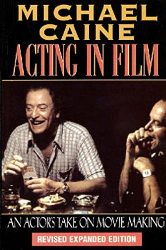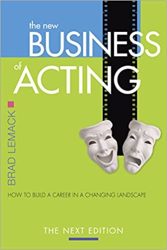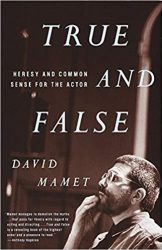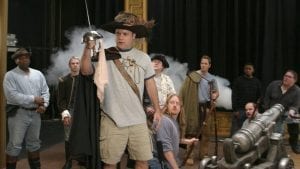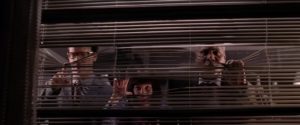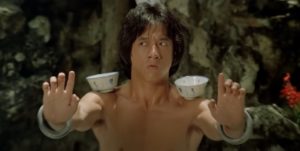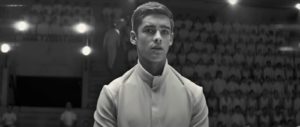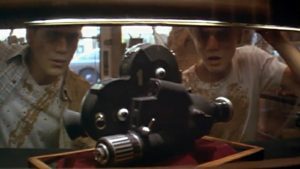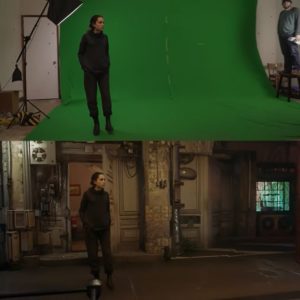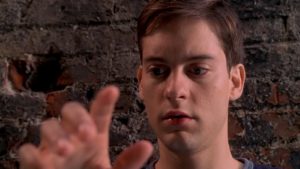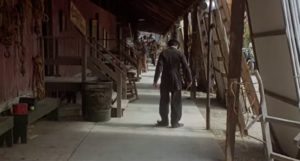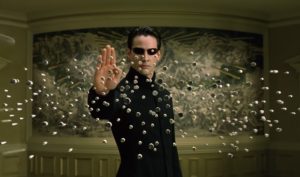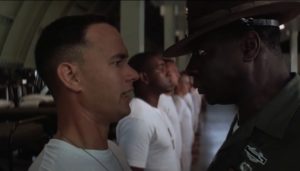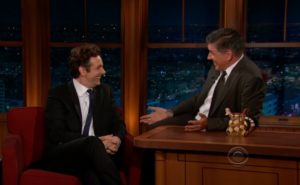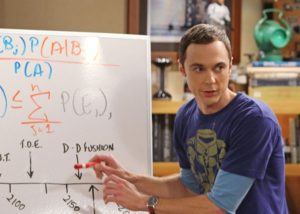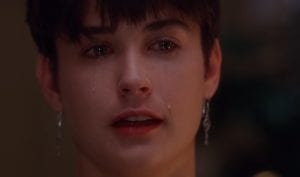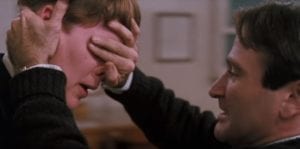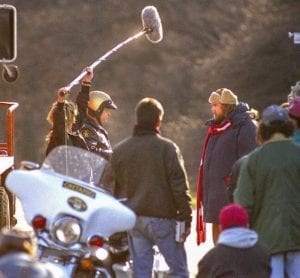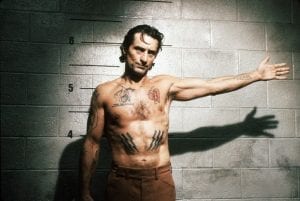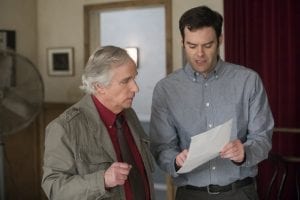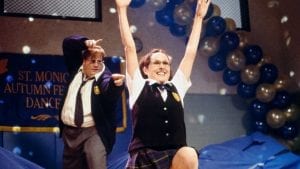
What is the point of acting? It’s to immerse the audience in a particular story. Therefore, how good or how bad acting is depends on how well that kind of acting helps immerse the audience in the story.
Good acting means focusing on your scene partners, responding emotionally even when not talking, using body language to show what happened off camera leading up to or after the scene, and making choices that align with the scene’s purposes. Bad acting is the opposite: isolated, out of place acting.
This article contains more details, including explanations with video examples, as well as links to articles to help you improve these aspects of your acting.
1. Good acting: adapting to scene partners. Bad acting: sticking to what you practiced.
Actors spend a lot of time practicing alone while they’re memorizing lines. For better acting, actors often practice delivering their lines in different ways, so they’re not stuck to just one kind of delivery of a certain line (so that they have enough flexibility to change their line in order to be compatible with their scene partners). If you practice saying your line only in one kind of way and then do that in your scene regardless of what your scene partners are doing, then your line delivery might look out of place. In order to make scenes realistic, the way you deliver your lines should look like a natural response to what is happening around you. If your lines look out of place, that can distract, or the scene looks unrealistic. Viola Davis warns against that kind of thing in the video below.
You can think of good acting as behaving in such a way that everyone’s responses around you feel natural, so that the overall scene feels real. Oscar winner Ben Kingsley says that he tries to make his scene partner look good when acting. He aims to be compatible.
For example, consider the scene below. In this scene, a person is repeatedly asked to say who he is, and his answers do not satisfy the person asking them. You can see how, in the beginning, both actors show themselves talking in relatively casual manner. Now imagine that the person asking the questions (Jack Nicholson’s character) had instead begun in the style of an intimidating interrogation. Responding with easygoing emotions might not make as much sense then. Or imagine if, at the end (at 1:03), the responder (Adam Sandler’s character) had not snapped angrily and instead started crying. Then the reactions of the others, including the facial expression at 1:05, would not make sense.
Therefore, paying attention to your scene partner and responding in a way that make sense is an important aspect of acting. There is a saying that “acting is reacting”. Good acting means good (compatible) reacting, whereas bad acting means bad (incompatible) reacting.
If you want to practice being more flexible in your acting so that you can better adapt to your scene partners instead of sticking to only one type of performance, check out this article about acting exercises for acting flexibility.
2. Good acting: acting even when silent. Bad acting: not acting when not talking.
When reacting appropriately within scenes, that’s not just when you’re talking, but also when you’re silent. Good acting involves really being present in the scene and making it visible that you are being affected by what’s going on in the scene in the moment, even when you’re silent, and even when no one is talking directly to you. Bad acting is constantly just thinking about what your next line is and simply waiting for your turn to talk.
A big part of acting is the acting you do when you’re listening, which is what Alan Rickman describes in the video below:
You can see an example of such attentive and responsive listening in the scene below, where both actors (Pierce Brosnan and Linda Hamilton) have very expressive faces while they’re listening to the other person talk. For example, at 1:09, Pierce Brosnan’s character is listing some places and you can see Linda Hamilton’s character imagining them and emotionally responding to them.
To achieve that kind of focus on what is going on in the scene requires not having to worry about what your next line is, which means that this can be helped with better memorization of lines (if that’s something you want to learn about, see the article about how famous actors memorize lines). Then you will be able to afford to give attention to your scene partners and listen carefully to them, so that the camera can see you listening, and so that your response later can feel like a natural continuation.
3. Good acting: actions show continuous past/future. Bad acting: nothing in beginning/end.
The camera only shows a segment of the character’s life, but this life continues offscreen before and after the scene, and good acting involves the ability to show that actions continue offscreen. Good acting involves acting as soon as they call action, even before any lines begin, and until they call “cut”, well after all lines have ended. Bad acting makes the scene feel isolated in time, with the character just beginning to “become alive” when they say their first lines and later “turning off” as soon as they finish saying their last lines (even though the camera is still on them).
In other words, good acting involves body language at the beginning and body language at the end (even if it’s subtle).
For example, in the scene below, you can see that the scene does not begin with people just standing in place; instead, people are busy moving about so you get a sense that they’ve been keeping busy for a while. At the end of the scene, you can see the person turn and begin getting to work, giving you the sense that they’ll now be working even after they’re no longer visible on screen. His body language makes the scene feel continuous with the offscreen future.
The next time you watch a scene, take a look at how the scene begins and ends. For example, take a look the video below. What actions do the actors do? In the beginning, notice that the first spoken lines are done while the actors are standing in one place and, nevertheless, instead of just beginning from that position, the actors walk into those positions and look around while they do, giving you the sense that they’ve been walking around this museum for a while. At the end of the scene, notice how Matt Bomer’s character doesn’t have any lines and yet he nods and begins moving to make you feel that the walk around the museum will continue.
For more information about this sort of “moment before” and “moment after”, take a look at the article about preparing for a one-line audition (incorporating such actions into your auditions can make you really stand out).
4. Good acting: serves the scene’s purpose. Bad acting: focuses only on self.
I was going to write about how good acting means being able to be subtle whereas bad acting tends to be too over the top. However, sometimes, over the top acting is exactly what the story needs, at least for parts of some scenes. There’s a time and a place for everything. Good acting involves knowing what the scene requires and doing it. Bad acting involves always acting the same way regardless of the needs of the scene/story.
For example, acting realistically doesn’t always make sense, such as when acting for comedic purposes. Even though an actor may be capable of acting realistically, they might choose to act differently in order to help achieve the scene’s comedic effect, as in the scene below. In this scene, that hard stare that Arnold Schwarzenegger’s character does from 0:47-0:56 is unrealistic but, as you can see from the video’s comments on YouTube, people found it hilarious. Thus, the purpose of the scene was fulfilled. Similarly, you can see how Jaime Lee Curtis’ character does a lot of big body language that would probably be too over the top for some scenes (enough though she is portraying someone who is bad at lying – in other times such behaviour might be shown more subtly) but in this case those big arm waving and head shaking movements helped highlight the relative stillness of Arnold Schwarzenegger’s character, helping put more focus on his “hidden” feelings. Thus, Jaime Lee Curtis’ acting served its purpose. Nevertheless, you can see how, even though it is a comedy, Eliza Dushku’s character does only very subtle actions (such as at 0:27); this also works because the focus of the scene isn’t on her. Additionally, despite the exaggerated stare of Arnold Schwarzenegger’s character, you can see that in those moments his body language other than his stare is quite normal, even though he is the focus of the scene, helping highlight his scene partner’s portrayal of a person who is awkward at lying. In other words, the scene is a team effort.
Actors have found that it is this skill in particular – acting in a way that helps deliver what the writer is hoping to convey – that helps them a lot in auditions, because doing “impressive” acting doesn’t help unless it works well for the scene. For more information about that idea, see the article about accomplished actors’ tips for auditions. You might also be interested in the article about how actors read scripts, as it gives more information about how the story, including its genre, can affect the kind of acting that you do.
Overall, a conclusion you can draw from the article is this: good acting is adapting seamlessly into the scene and story. Bad acting is acting that makes you look out of place and only sticking to what you want to do (rather than focusing on compatibility).


